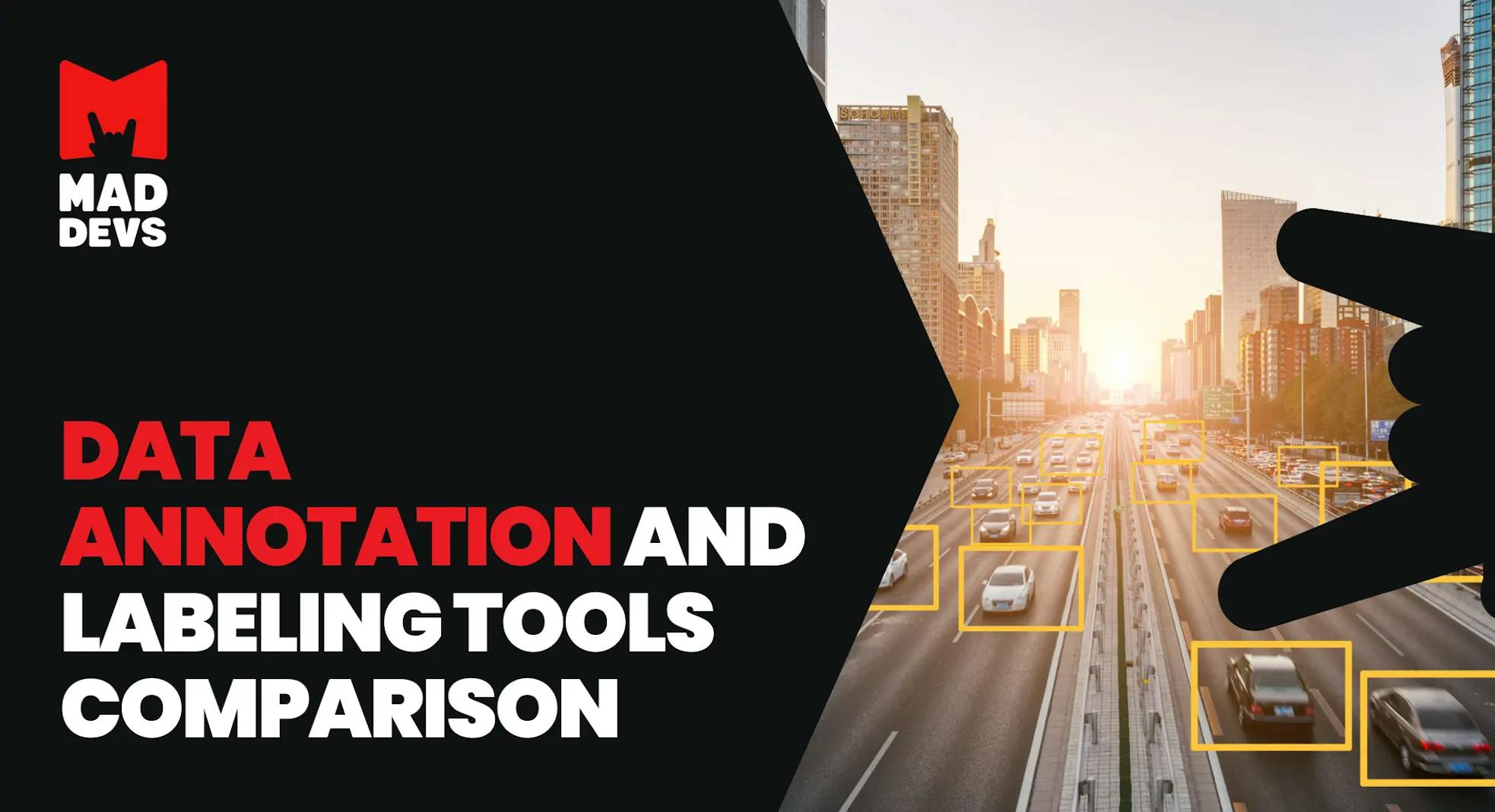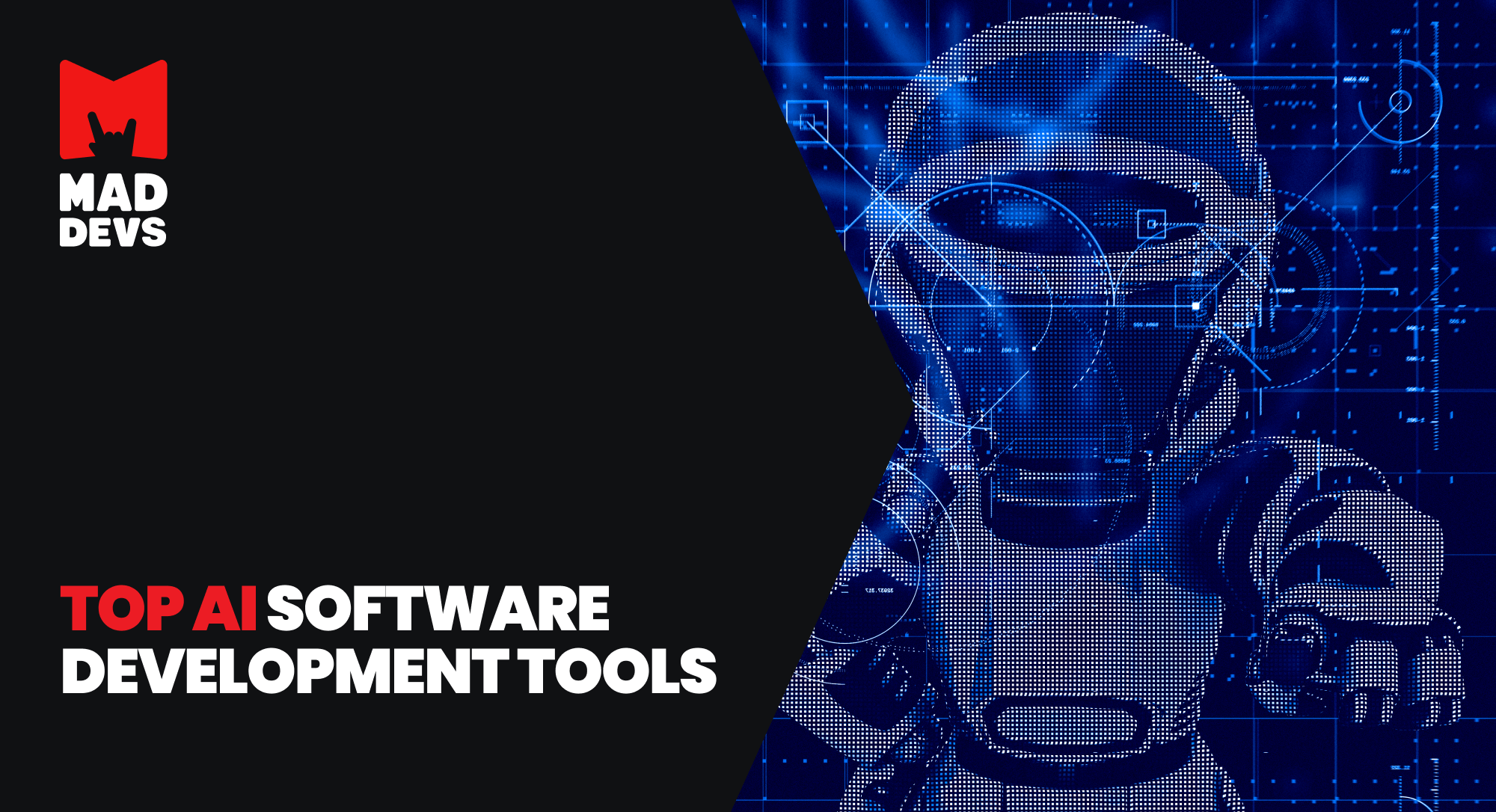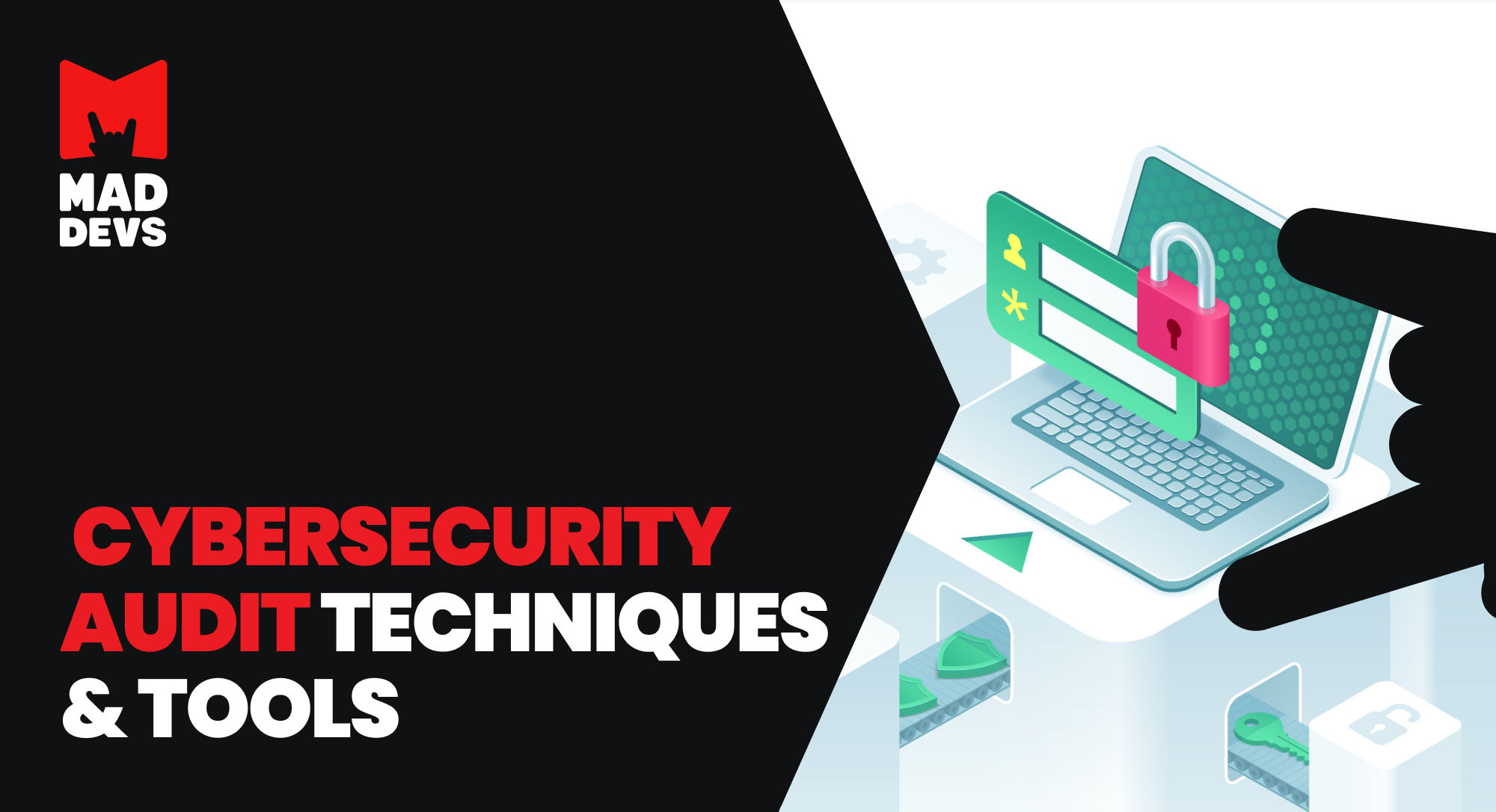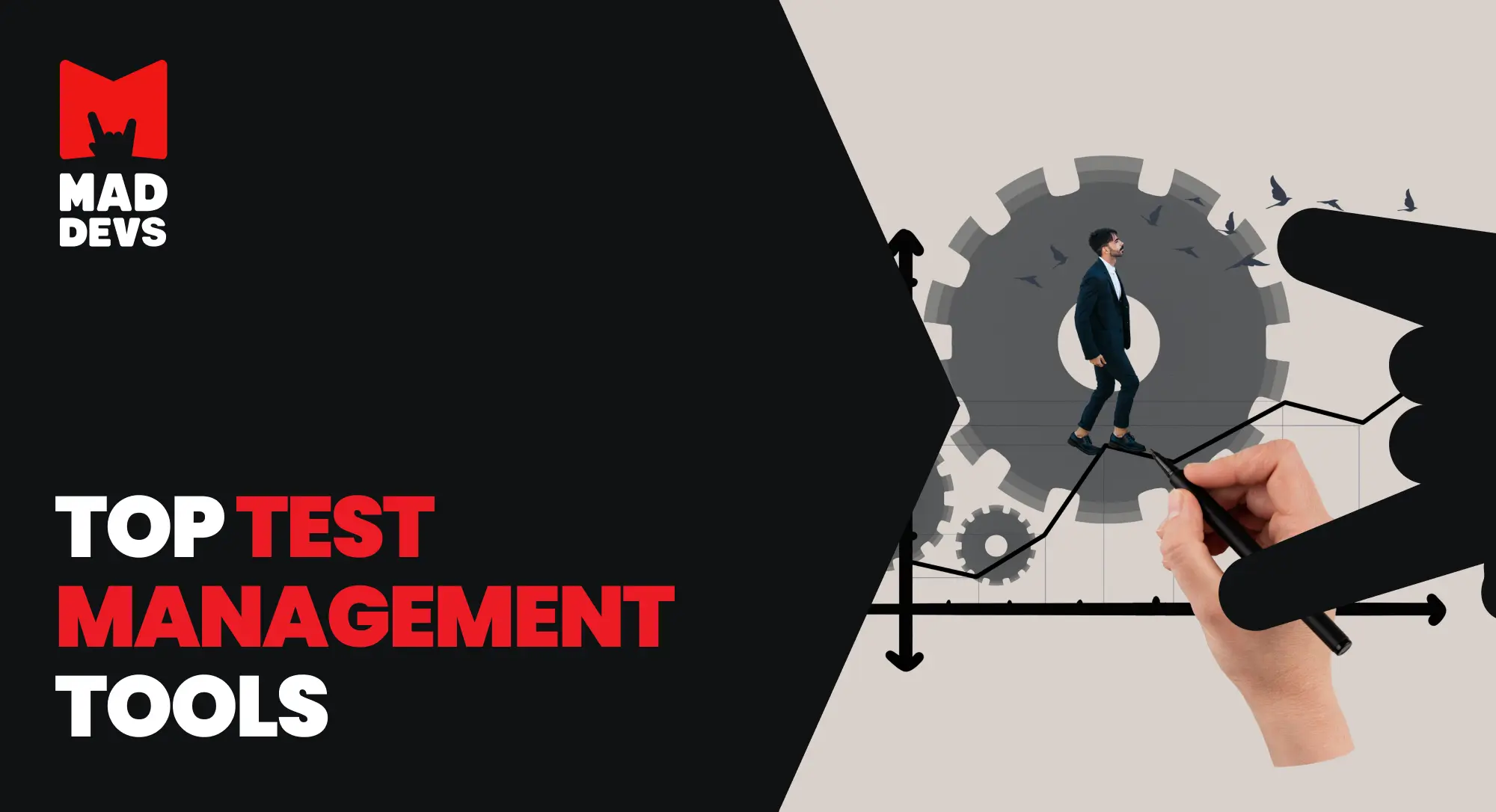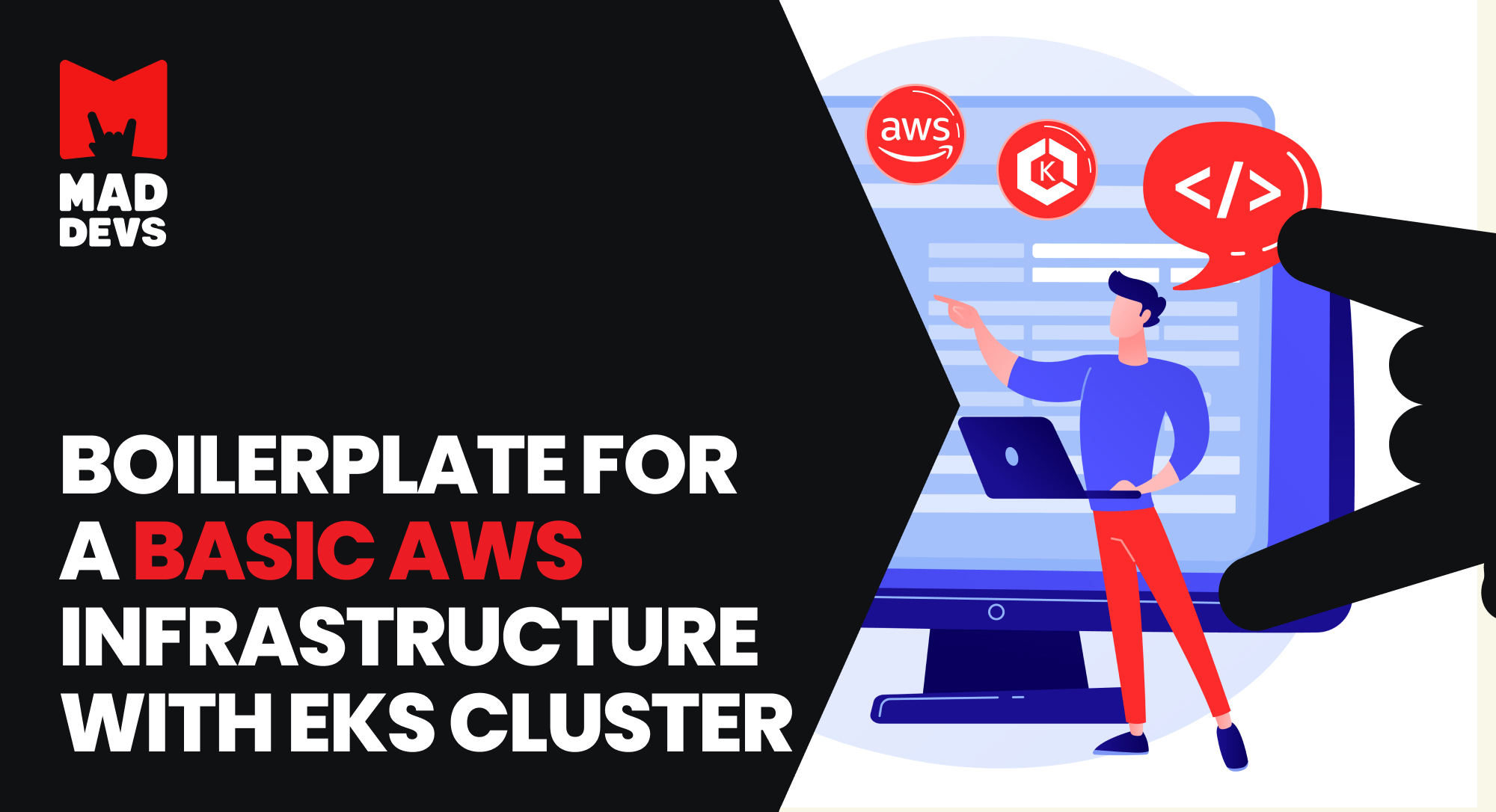Data annotation is a process used in machine learning to label data to show the desired outcome for a machine learning model. It involves marking, tagging, transcribing, or processing datasets with the features that the machine learning system should be able to recognize. With annotated data, algorithms can be trained to identify the same features in data that have not been annotated. It is used in both supervised learning and semi-supervised or hybrid machine learning models. This article will compare commercial and open-source data annotation tools to help you decide the best.
What's a data annotation tool?
Data annotation tools are software solutions that can be used to label production-grade training data for machine learning. Organizations can either build their own tools or use open-source or freeware. They can also be purchased or leased commercially. These tools are generally designed to work with specific data types, such as image, video, text, audio, spreadsheet, or sensor data. They come with different deployment models, including on-premise, container, SaaS (cloud), and Kubernetes.
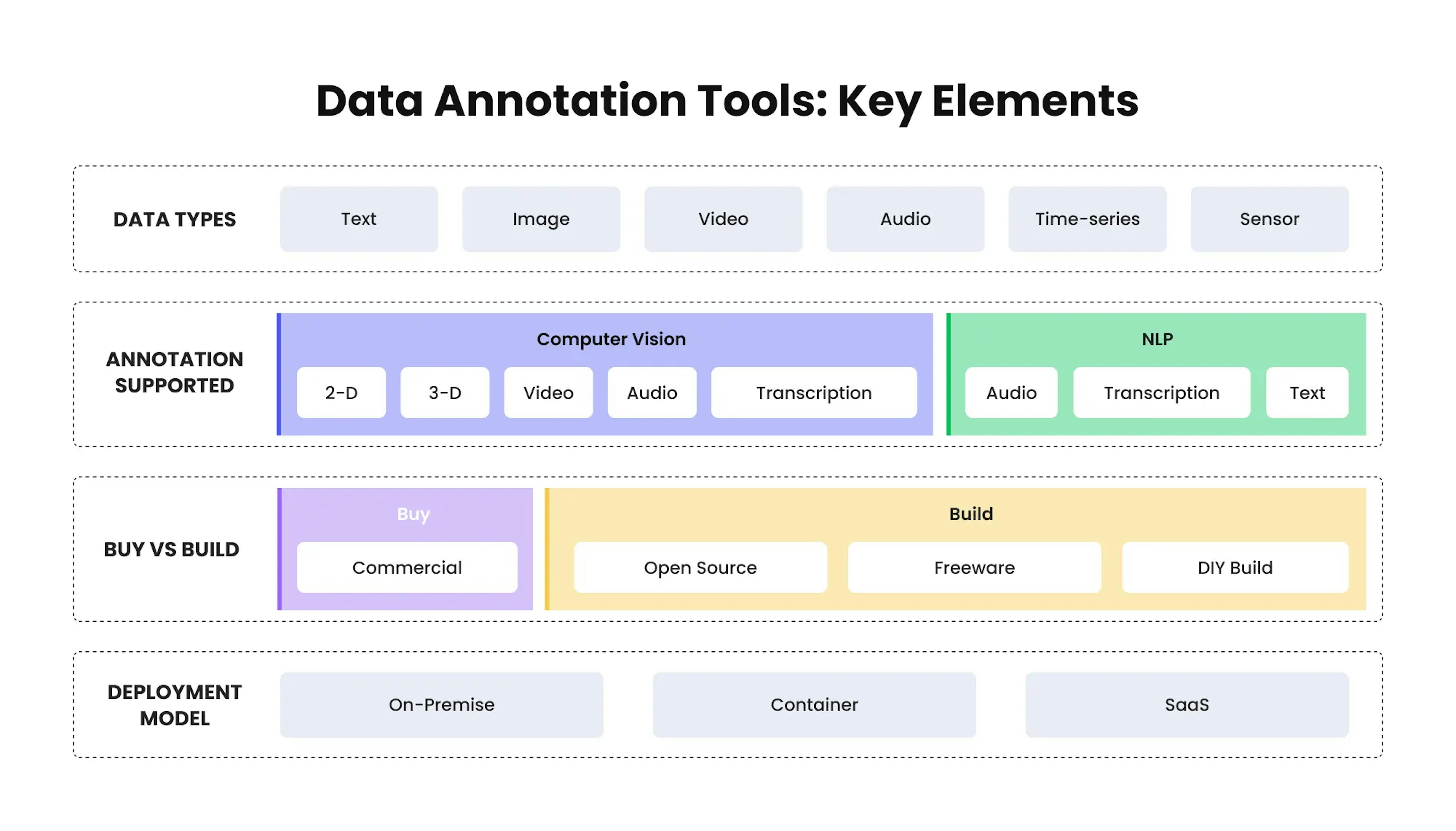
What are the types of data annotations?
| TYPES OF DATA ANNOTATION | |
|---|---|
|
| Text annotation involves adding notes, highlights, underlining, comments, footnotes, tags, and links to a text. |
|
| Image annotation is significant for a good range of applications, including computer vision, robotic vision, face recognition, and solutions that believe machine learning to interpret images. Metadata must be assigned to the pictures within identifiers, captions, or keywords to coach these solutions. |
|
| Sentiment annotation is a powerful tool that can be used to inform business decisions. Machine learning models can be trained to identify and classify sentences as positive, negative, or neutral through annotation. |
|
| Video annotation involves labeling video clips to train computer vision models to identify and recognize objects. This is different from image annotation, which requires objects to be labeled on a frame-by-frame basis to be recognizable to machine learning models. |
|
| Audio annotation is transcribing and tagging speech data, including the precise pronunciation and intonation, along with the language, dialect, and speaker demographic. Depending on the use case, a more specific approach may be required, such as tagging aggressive speech and non-speech sounds like glass breaking for security and emergency hotline applications. |
|
| Named entity annotation. Organizations use named entity annotation for various purposes, such as helping eCommerce clients identify and tag important descriptors or aiding social media companies in tagging people, places, companies, organizations, and titles to improve targeted advertising content. Named Entity Recognition (NER) systems require a large amount of manually annotated training data. |
Regarding annotation software, it is important to carefully plan and assess each option to determine which best meets your needs. With so many different products on the market, each having its advantages and disadvantages, it is essential to take the time to evaluate your options and make an informed decision.
How to choose a data annotation tool
When deciding between building or buying a tool, you must consider many factors. If the time and cost of a DIY approach aren't worth the potential benefits of customizing and keeping the intellectual property, the next step is to choose a commercial tool. Here, we'll look at some of the things you should consider when making this decision.
What is your use case?
When selecting a data annotation tool, the type of data you wish to annotate and your business processes are essential factors to consider. There are tools available for labeling text, image, and video, with some image labeling tools having video annotation capabilities.
Moreover, data annotation tool providers are increasingly providing holistic technology platforms for data annotation for machine learning. These platforms provide features that make data enrichment easy, along with multiple annotation options (e.g. 2-D, 3-D, audio, text) and different storage options (e.g. local, network, cloud). Quality control workflow and pre-annotated data acceptance are also available. If you anticipate your project or product needs to change over time, it may be beneficial to consider a platform that allows greater flexibility.
Who will be using the tool?
Selecting the right tool for data annotation should factor in the workforce responsible for the task. Consider the training and access requirements of the people who will be annotating or labeling the data, as well as the specific instructions related to your use case. When assessing your options, make sure to ask the following questions:
- Do you have a team with experience using the commercial tools you are looking to implement for your project?
- Do you have detailed documentation and a training program to get them up to speed?
- Is there a process in place to guarantee the quality of the project?
Do you need a vendor or a partner?
When researching your data annotation tool options, it is important to consider the tool itself and the company offering it. You should look for a partner who is open to collaboration and willing to consider feedback or suggestions for new features that could make your tasks easier or improve the performance of your AI models.
It is also important to have the flexibility to switch between tools and workforce options as new tools and strategies emerge.
Additionally, remember that your annotation tasks may change over time, so choosing a tool that can easily accommodate such changes is important.
Comparison of best annotation tools
Take a closer look at some of the top data annotation tools on the market today.
Proprietary data annotation tools
If your business is at the growth or enterprise stage, you should look into obtaining proprietary data annotation tools. Doing so will allow you to scale up and sustain that growth in the long run, as you can customize the tools with minimal development resources.
| TOOL | BEST FOR | FREE TRIAL | PRICE | DEPLOYMENT |
|---|---|---|---|---|
|
| Freelancers Large Enterprises Medium Business Small Business | Available | Depending on your needs. | SaaS Web Cloud |
|
| Small Business Medium Business Enterprise Business Freelance Nonprofit Government | Available | Depending on your needs. | SaaS Web |
|
| Large Enterprises Medium Business Small Business | Available | Starter plan from $62. | SaaS Web Cloud |
|
| Large Enterprises Medium Business Small Business | Available | Has 4 pricing edition(s), from $0 to $3,850. | SaaS Cloud Web |
Labelbox
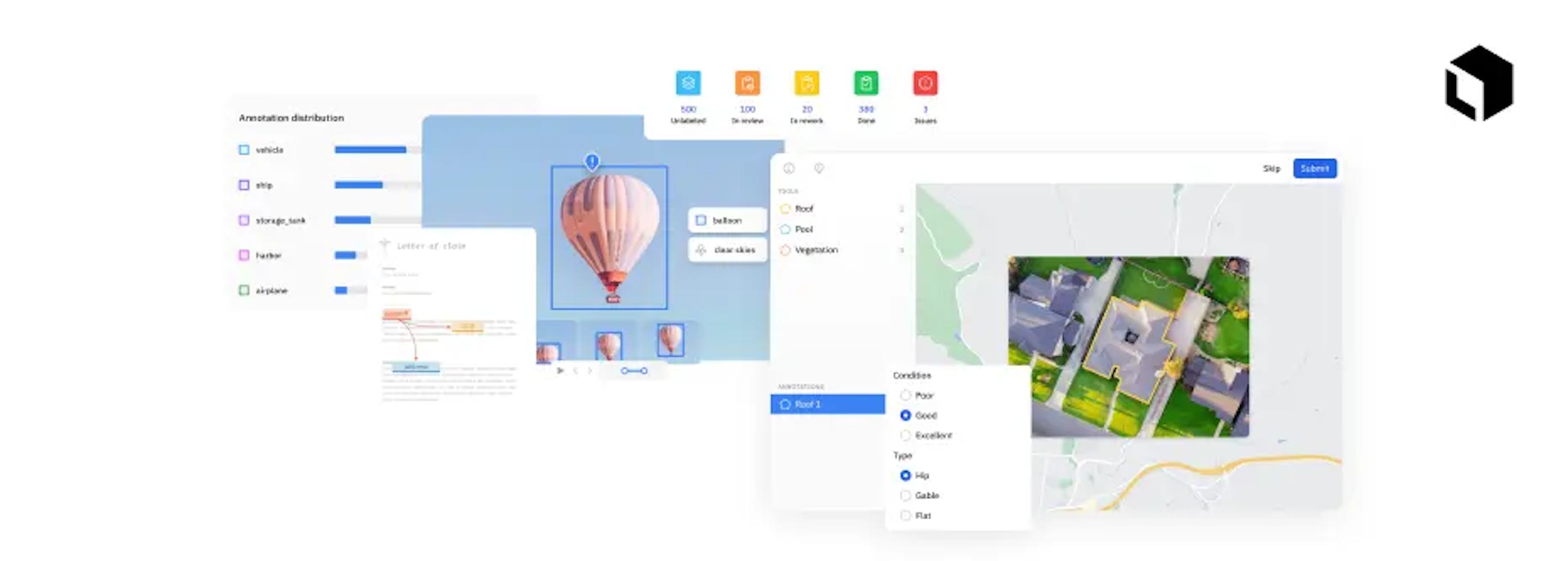
Labelbox is an all-in-one machine-learning tool that helps you quickly and accurately create labels for your data. It has powerful collaborative functionalities that allow you to work efficiently with labelers and domain experts for image labeling. Labelbox was built with three core layers to facilitate the entire data labeling process from start to finish. The platform was created in 2018 and is now one of the most popular data labeling tools. It offers AI-enabled labeling tools, labeling automation, human workforce, data management, a powerful API for integration, and a Python SDK for extensibility. It also enables annotations with polygons, bounding boxes, lines, and more advanced labeling tools.
Key features:
- AI-assisted labeling (BYO models).
- Integrated data labeling services.
- QA/QC tooling and label review workflows.
- Strong labeler performance analytics.
- Customizable interface to simplify tasks.
- Superpixel coloring option for or semantic segmentation.
- UX-friendly interface.
- Advanced Performance and quality control monitoring.
- Enterprise-friendly plans and SOC2 compliance.
Price: Free 5000 images/Custom Pro and Enterprise plans.
Supervisely
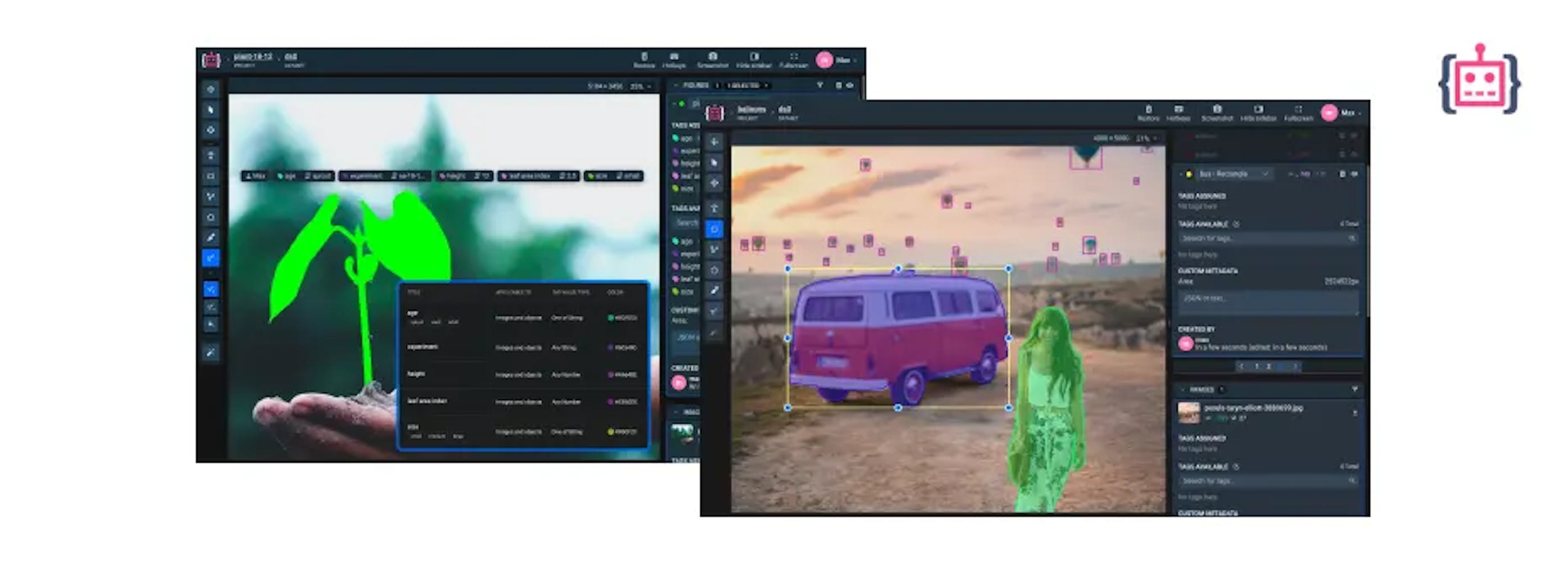
Supervise.ly is a powerful AI-driven machine learning labeling tool that offers a range of features for quick and accurate labeling of data. It is a self-hosted, cloud-based computer vision platform with an integrated API and SDK, making image labeling easier and more efficient. In addition to basic annotation tools such as boxes, lines, dots, polygons, or bitmap brushes, Supervise.ly also provides a Data Transformation Language tool and 3D Point Cloud capabilities.
Key features:
- AI-assisted labeling.
- Multi-format data annotation & management.
- Option do develop and import plugins for custom data formats.
- 3D Point Cloud.
- Options for project management on different levels for teams, workspaces, and datasets.
- Comes with Supervisely Agent—a simple open-source task manager available as a Docker image.
- Option to draw holes within the polygons.
- Data Transformation Language tools.
Price: Free 100 images in the community edition.
SuperAnnotate
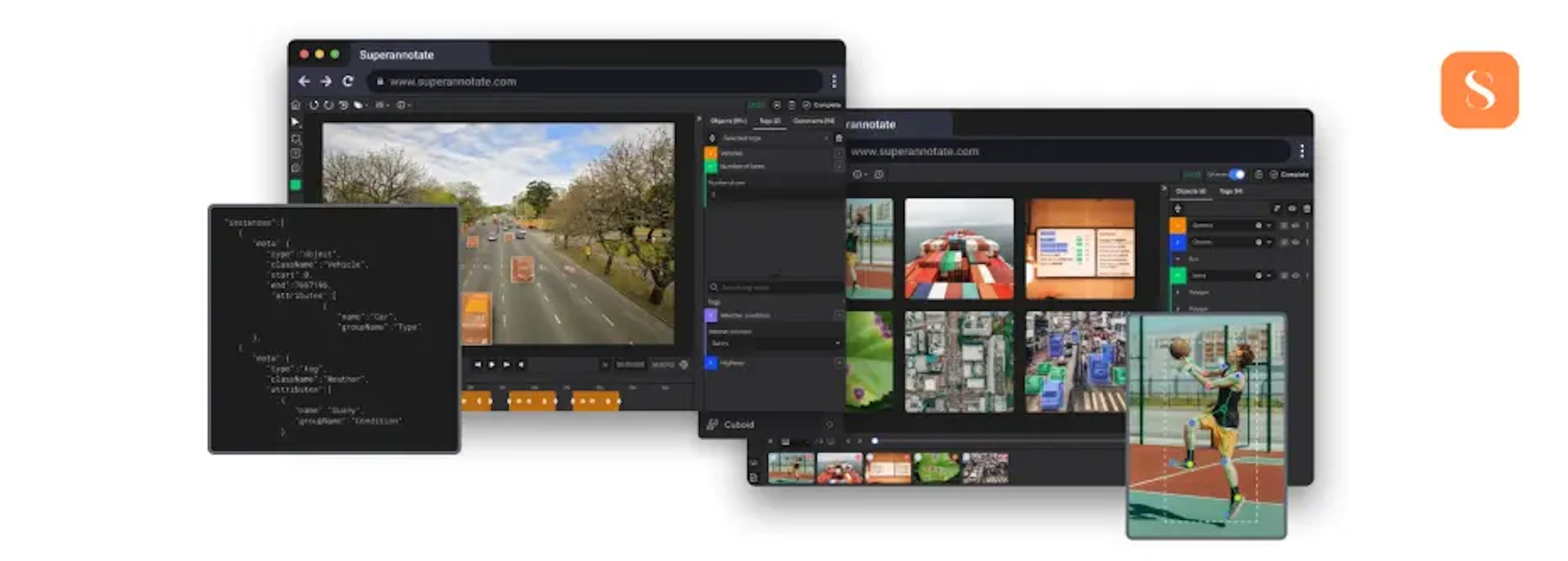
SuperAnnotate is an end-to-end image and video annotation platform streamlining and automating computer vision workflows. Using a brush, it offers vector annotations (boxes, polygons, lines, ellipses, key points, and cuboids) and pixel-wise annotation. This AI-powered tool makes it easy to label images for training machine learning models and to build high-quality training datasets for computer vision and NPL.
Its advanced premium tools include data curation, robust SDK, offline access, QA, and integrated annotation services. SuperAnnotate is one of the top-performing labeling tools, providing incredibly precise datasets and efficient pipelines up to 5 times faster than regular ones. It is an excellent integrated software that gives you the ultimate service and experience in creating super-efficient data pipelines.
Key features:
- AI-assisted labeling (BYO Models).
- Superpixels for semantic segmentation.
- Advanced quality control systems.
- Supports various formats through image conversion.
- Offers free web-based tools created in cooperation with OpenCV.
- Advanced project management features (analytics, filtering, etc.).
Price: Free 14-day trial / Custom Starter, Pro, Enterprise plans
Hasty
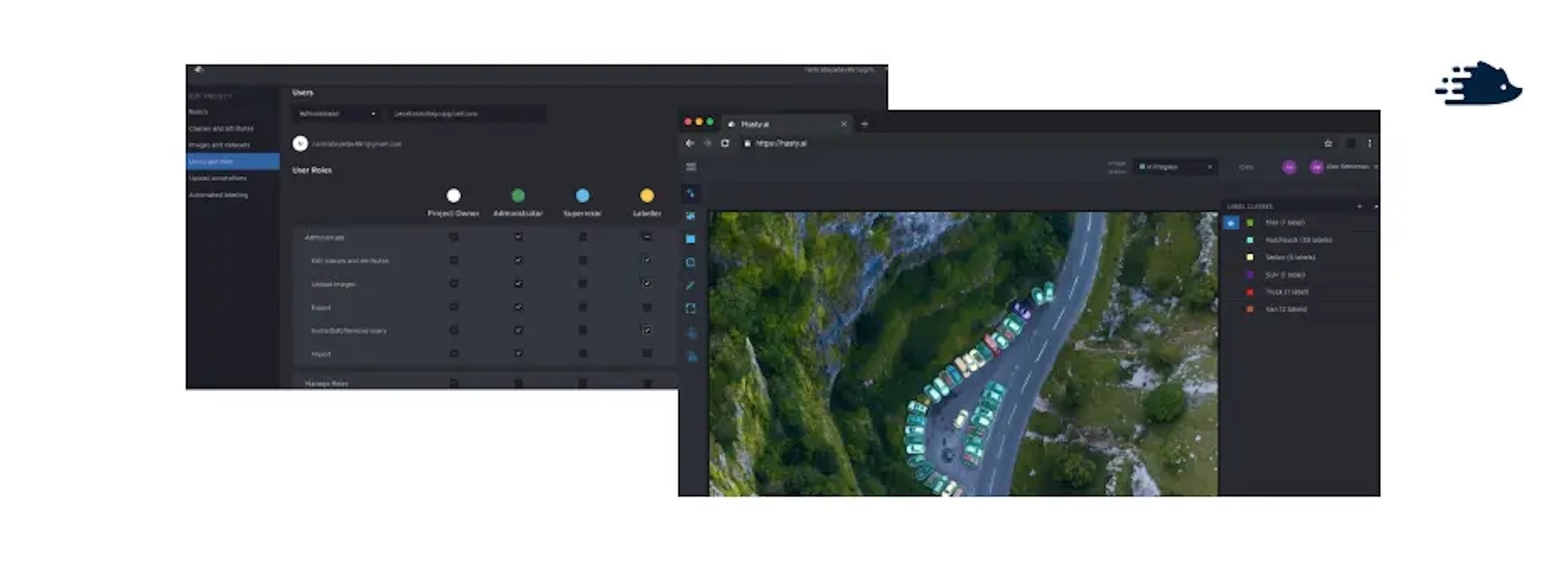
Hasty.ai is a Berlin-based venture founded in January 2019 at a hackathon hosted by industrial tech company Wattx. The core team comprises experts in venture building, computer science, and UX/UI design, and they continuously improve the tool. With a background in AI for manufacturing, the tool is incredibly useful for any computer vision domain.
The annotation suite is available for free without any limitations, and it is designed to accommodate any number of users. The platform offers an interesting credit score system for automation tools, which provides one of the most sensible pricing models in the domain.
Key features:
- Hasty has developed a series of AI Assistants powered by Active Learning and trained as you annotate the data.
- Offers a model playground that allows you to construct fine-tuned models.
Price: Hasty AI has four pricing edition(s), from $0 to $3,850.
Open-source data annotation software
Open-source data annotation tools allow users to use or modify the source code and customize features to meet their needs. By joining the open-source community, developers can collaborate and share use cases, best practices, and feature improvements.
However, using open-source tools comes with the same commitment as building your tool, with significant investments needed to maintain the platform. Additionally, open-source tools are often not comprehensive labeling solutions and lack robust dataset management, label automation, or other features that drive efficiency. Quality assurance workflows and accuracy analytics are also often not available in open-source tools, which can result in lower data quality.
It's important to note that open-source communities mainly provide support through online documentation, FAQs, and tutorials, with no support numbers to call and few providing data privacy and security measures. Open-source data annotation tools may be good for learning or testing early versions of a commercial application but may present barriers to scale due to their limited features.
LabelIMG

LabelIMG is a great open source and free-to-use image labeling tool. Its simple and intuitive interface made it the first tool we ever used back in 2017, and its ability to work offline provided maximum data security. It is compatible with Windows, Linux, Ubuntu and Mac OS and can be used with the Python library in Anaconda or Docker. However, it only supports bounding boxes as the labeling method, so it is a great start but may not be enough for more complex projects. Annotations can be saved as XML files in the PASCAL VOC format, as well as the YOLO and CreateML formats.
Key features:
- Allows to save annotations in the form of XML files in PASCAL VOC format.
- LabelImg is written in Python and uses Qt for its graphical interface making it a great choice for Linux-based systems.
- It provides hotkeys for fast navigation and annotation of multiple images.
CVAT
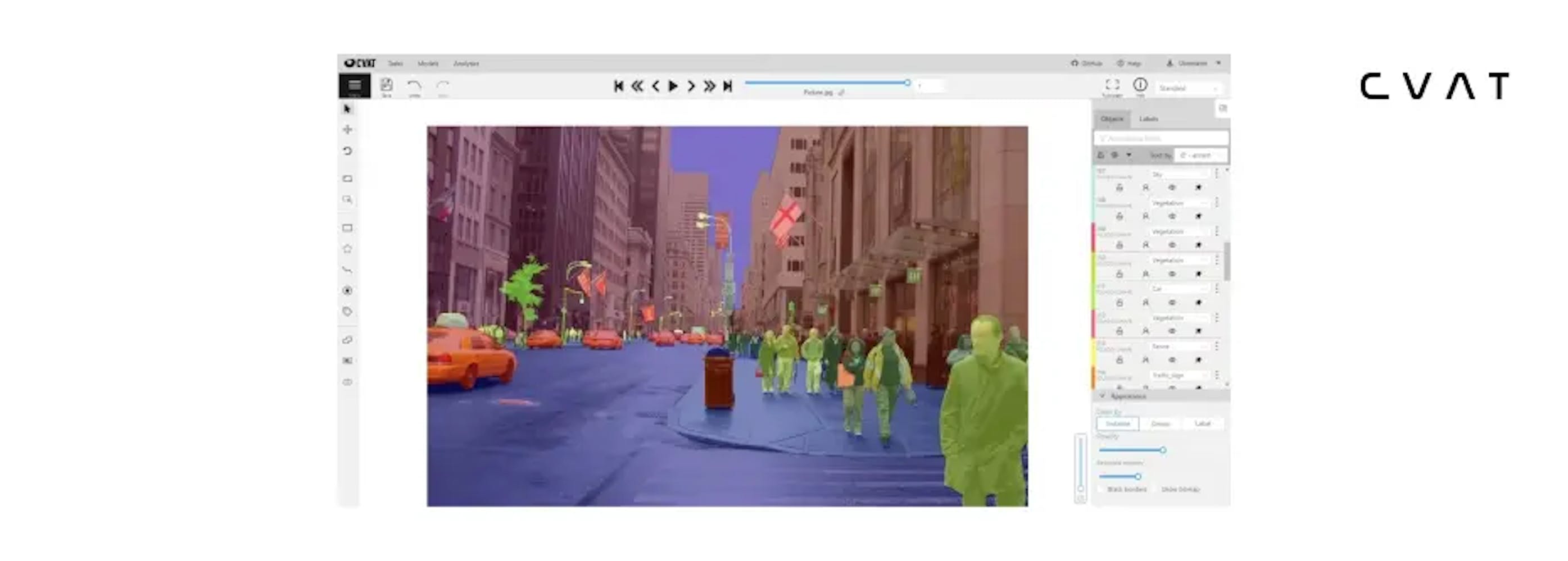
Intel's open-source Computer Vision Annotation Tool (CVAT) may not have the most intuitive UI, but it is packed with powerful, up-to-date features and works in Chrome. It is one of the main tools used for labeling, as it is faster than many other tools on the market. CVAT supports object detection, image classification, and image segmentation with boxes, polygons, lines, and keypoints. Plus, it provides various automated features, like copying and propagating objects, object tracking and interpolation, and automatic annotation, powered by TensorFlow OD API. Working collaboratively is also easy with CVAT, since you can split and delegate work.
Key features:
- Interpolation (between keyframes for bounding boxes and polygons).
- Automatic annotation.
Labelme
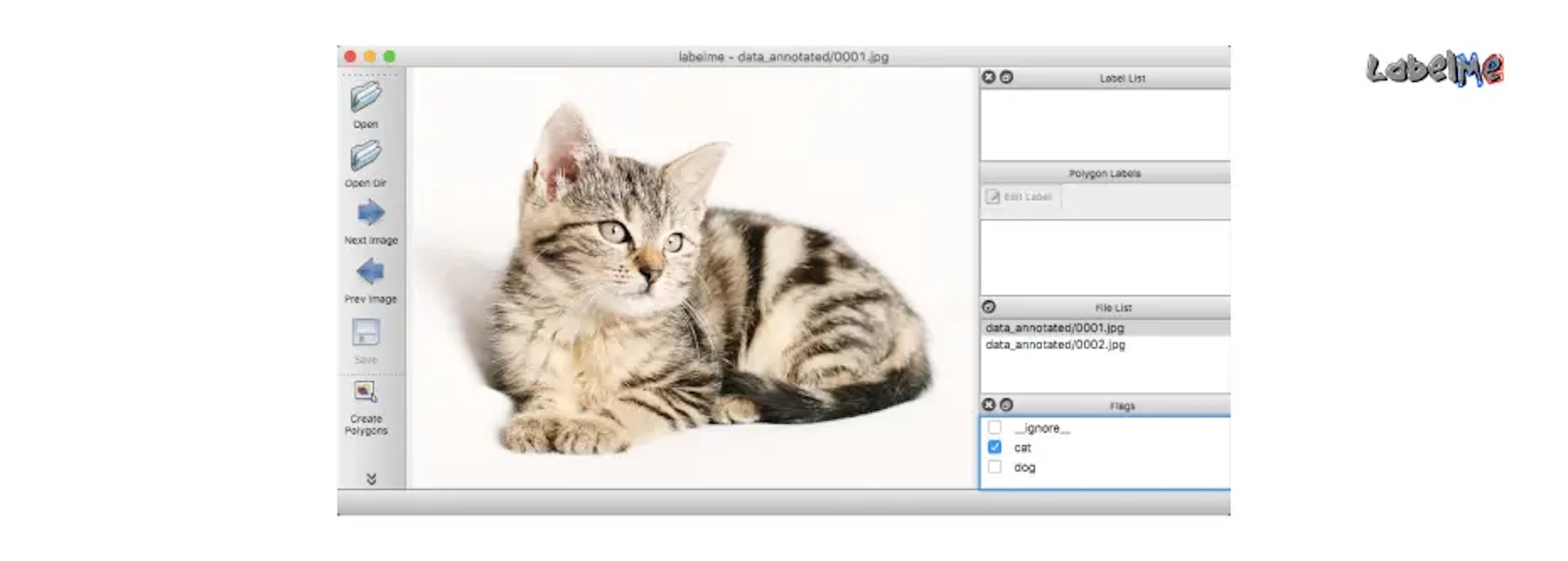
LabelMe is an open-source image and video annotation tool that was developed by the Massachusetts Institute of Technology in 2008 to build the canonical LabelMe dataset. It runs on Windows, Ubuntu, and Mac operating systems, along with Python launchers. LabelMe offers image and video annotation through the use of polygons, boxes, circles, lines, and keypoints, as well as both semantic and instance segmentation. It also provides classification by its image flag annotation tool, a cleaning feature, and a customizable user interface. Exporting options are available in VOC and COCO formats for both semantic and instance segmentation. However, it does not offer project management capabilities, as it was not designed for collaborative labeling. However, it offers integration with Mechanical Turk for easy outsourcing of the manual labeling process.
Key features:
- Offers polygons, rectangles, circles, lines, and points for image annotation.
- Batch processing of multiple files.
- Web-based & local machine version.
Label Studio

Heartex Inc's Label Studio is an open-source labeling tool offering impressive versatility and advanced active learning and collaboration functions. It supports a wide range of annotations, such as image classification, object detection, and semantic segmentation, and works with all data types, including audio, image, text, and HTML. There's also a unique configuration setup called Labeling Config that lets you design your custom UI. Plus, Label Studio has several algorithm-driven automation options, including a pre-labeling feature that can pre-label data based on an existing machine-learning model. You can appreciate that it has a vibrant community of users and an active Slack channel where users can exchange tips or make requests to the team.
Key features:
- Quickly configurable for many data types.
- Machine learning integration.
- Exports are done using a library that can take internal Label Studio JSON-based format.
- Possible to compare predictions.
Comparison table of best annotation tools
When looking for annotation software, it is important to carefully consider the advantages and disadvantages of each option available on the market in order to select the one that is the best fit for your needs. This table compares the 8 best annotation tools in terms of supported annotation type and deployment.
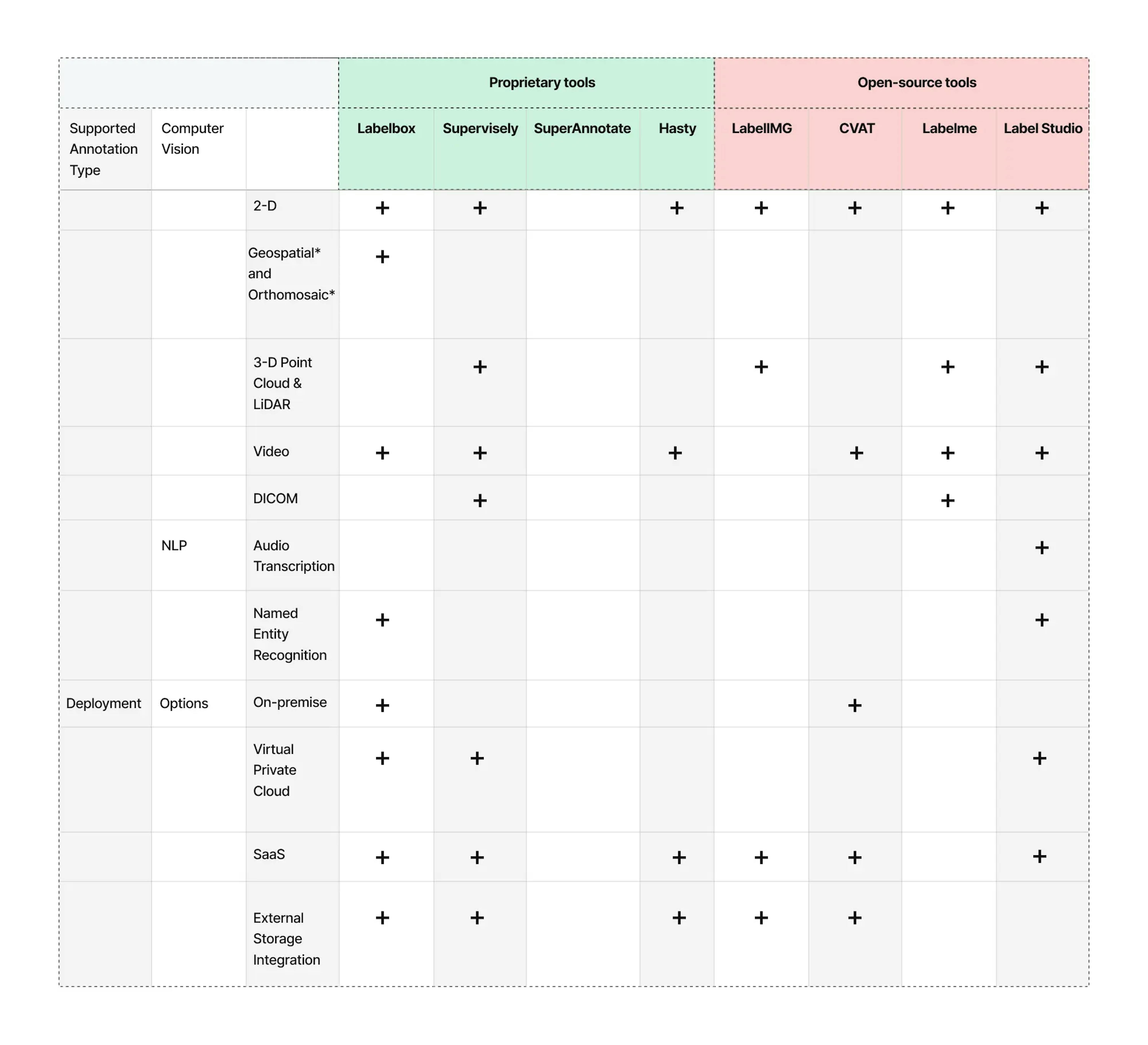
Takeaway
With so many annotation software options available, it can be difficult to make an informed decision about which one will best meet your needs. But don't worry! This guide can help you find the perfect fit for you or your business, considering all the advantages and disadvantages of each solution. There is no one-size-fits-all when it comes to annotation software, but with the right guidance, you can make the best choice for your unique situation.

